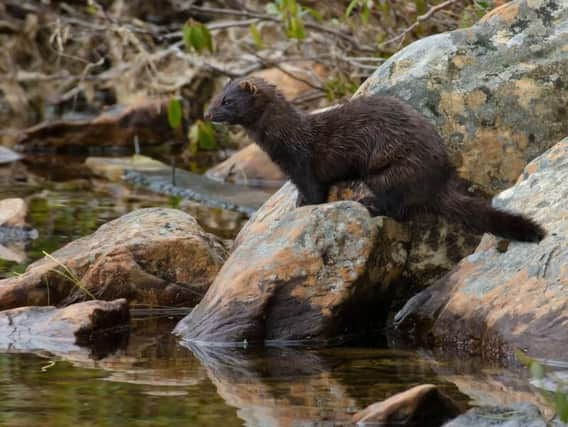Calls for fight against influx of alien species to be stepped up


They say a “citizens’ army” must also be trained to spot non-native species, in a bid to prevent them gaining a foothold and endangering public health and the environment.
The UK currently spends around £1.8 billion a year on tackling invasive species, which can harm indigenous wildlife through predation, competition and the spread of pests and diseases.
Advertisement
Hide AdAdvertisement
Hide AdNon-native species already established here include plants such as Himalayan balsam and giant hogweed and animals such as mink, grey squirrels and signal crayfish.
Grave implications
But a new report, prepared for the UK government’s Environmental Audit Committee, estimates that around 40 non-native organisms will become invasive within 20 years.
Many of these could have grave implications for nature and for people.
The report concludes that ministers have missed legal targets for tackling the problem and failed to give invasive species the same importance as animal and plant health.
Spending on biosecurity spending across the country is around £220 million a year, compared to £900,000 for alien intruders.
The report calls on the government to: raise funding to the Non-Native Species Secretariat to £3 million a year; train 1.3 million volunteers to identify and respond to invasive species outbreaks; set up a dedicated border force by 2020 to help stop organisms being brought into the UK; ban imports of problem species before they become an issue; establish a rapid response emergency fund; and include foreign pathogens in the next Invasive Non-Native Species Strategy.
Too little, too late
“If we’re to beat this we need people power, with an army of volunteers trained to spot and stop an invasive species before it becomes established,” said Labour MP Mary Creagh, who chairs the Environmental Audit Committee.
“We’re witnessing changes, from climate change, that put the future of our natural landscape at risk.
Advertisement
Hide AdAdvertisement
Hide Ad“Oak processionary moth caterpillars can strip an oak tree bare as well as posing a hazard to our own health.
“We face losing half of the UK’s native ash trees to ash dieback within a century, costing £15 billion.
“New regulations to halt their progress are welcome but they are too little, too late.
“Government funding to tackle invasive species is tiny and fails to match the scale of the threat.”
There has been a significant jump in the numbers of invasive species colonising new countries across the globe.
A threefold increase in cross-border travel and a rise in air and sea transit of goods has been blamed, with climate change a contributory factor.
In the UK signal crayfish are killing off native populations through transmission of a deadly plague. Meanwhile, an epidemic of ash dieback, caused by a non-native fungus, is predicted to wipe out half of the country’s ash trees in the next 100 years.
Future threats are forecast to come from the Asian tiger mosquito, a carrier of dengue fever and chikungunya.
American mink
Black rats
American signal crayfish
Grey squirrels
Rhododendron
Japanese knotweed
Giant hogweed
Himalayan balsam (Impatiens glandulifera)
